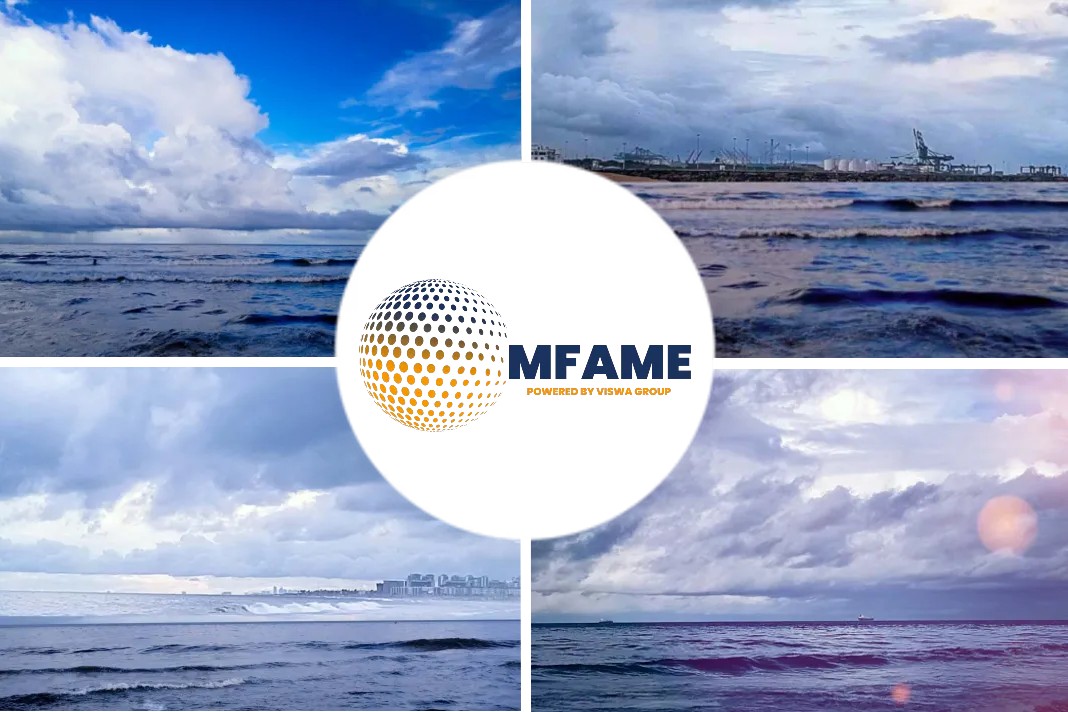- Containerships Aurora receives 44 cu m of Bio-LNG
- Bio-LNG reduces GHG emissions by at least 67% on well-to-wake basis
- LNG’s share in global bunker fuel mix to rise to 16% in 2030: Platts Analytics
A recent news article published in the Platts states that CMA CGM, Shell perform first Bio-LNG bunkering in Rotterdam.
Bio-LNG bunkering trial
Global shipping company CMA CGM and energy company Shell have performed the first Bio-LNG bunkering trial in Rotterdam, paving the way for the shipping company to achieve its target of net zero carbon by 2050.
The Containerships Aurora, a 1,400 TEU LNG-powered vessel, was bunkered by Shell with a nearly 10% blend of low carbon Bio-LNG while calling at Rotterdam. The vessel received around 483 cu m of LNG, 44 cu m of which were Bio-LNG, a statement on the CMA CGM website showed Dec. 1.
Safe and efficient bunkering operation was performed by the barge LNG London at the Rotterdam Short Sea Terminals.
The operation was thus successfully conducted by means of a ship-to-ship transfer, while the Containerships Aurora carried out cargo operations simultaneously, ensuring schedule integrity, it added.
Sustainable supply chain
“Shell believes LNG is the first integral step to decarbonize the shipping sector,” Tahir Faruqui, general manager at Shell Global Downstream LNG said.
LNG offers immediate emissions reduction and has the potential to become a net zero emission marine fuel given the possible roles of Bio-LNG and synthetic LNG, Faruqui said.
“We look forward to assessing how the supply chain might be scaled to enable LNG to become a viable carbon neutral marine fuel,” Faruqui added.
Shell’s Bio-LNG offering
Shell’s Bio-LNG offering, combined with the dual-fuel gas engine technology developed by CMA CGM, has the potential to further reduce greenhouse gas emissions, including carbon dioxide, by at least 67 % well-to-wake compared with VLSFO, the statement said.
Produced from agricultural and industrial food waste, Bio-LNG has demonstrated the future potential of the Bio-LNG supply chain. Results from the trial will give the maritime sector a vital demonstration into the scalability, sustainability and technical compliance of Bio-LNG.
CMA CGM Group’s dual-fuel gas vessels
The CMA CGM Group’s dual-fuel gas vessels, which operate with LNG and biomethane, already have the technical capability of using e-methane, instead of LNG, a source of carbon-neutral fuel. This “e-methane ready” fleet consists of 20 vessels already in service and a total of 44 vessels by the end of 2024, CMA CGM said.
In addition to this new milestone in the use of Bio-LNG for shipping, CMA CGM in 2021 supported the production of 25,000 mt of biomethane, equivalent to a year’s fuel consumption of four 1,400-TEU LNG-powered ships, which in turn supports Shell to develop production capacity to further accelerate the availability to a wider market, it said.
LNG driving towards net-zero
According to SEA-LNG, LNG’s transition pathway to carbon-neutral shipping services, through the use of Bio-LNG and synthetic LNG, is clear and well defined.
Many owners know that bio and synthetic LNG can be used interchangeably with existing LNG bulk infrastructure, supply chains, bunkering vessels, dual fuel engines and the fuel storage, and supply systems onboard these vessels, SEA-LNG said in a statement in October.
No expensive retrofit is required as demonstrated by the recent bunkering of Unifeeder’s M/V ElbBlue with synthetic LNG, it said.
Minimal methane slip
There is minimal methane slip in the high-pressure engines that can be purchased today. Further, low-pressure engines have been improved significantly and continue to improve, to the point that methane slip arguments are just an excuse to disparage LNG to justify waiting and inaction, it added.
According to S&P Global Platts Analytics, in 2021, HSFO will account for 16% of global bunker demand, VLSFO for 43% and LNG for 7%.
In 2030, it forecasts HSFO will account for 25% of global bunker demand, VLSFO for 33% and LNG for 16%, thereby showing LNG’s increasing role as a marine fuel.
Did you subscribe to our daily Newsletter?
It’s Free! Click here to Subscribe
Source: Platts






















